What investing books do you recommend? That’s a question I get a lot. And I usually answer it with a question. What are you looking for?
What I may not have realized, is that most people asking for a great investing book don’t necessarily know what they should be looking for. They may not have the same level of comfort with numbers. Some might be bored easily. And more importantly, not everyone will be keen on learning how to build a three-statement financial model on their own or deep dive into decades of stock market history.
The books teaching investment basics tend to repeat the same ideas and the same conventional wisdom:
These essential lessons can be gleaned by many investing books oriented toward beginners. They include classics like The Little Book of Common Sense Investing by John C Bogle or the very accessible The Only Investment Guide You’ll Ever Need by Andrew Tobias. These books generally focus on the fundamentals of the stock market and investment vehicles available. They will teach you that you can achieve fantastic returns by simply being invested in low cost ETFs that closely follow the market over time such as the S&P 500 (SPY) or the Nasdaq (QQQ).
Now, once you’ve covered your basics and have made sure you have a clean financial house (i.e. no short-term debt, emergency fund in cash, retirement savings in broadly diversified low cost index funds), a new category of books can open up your horizon. These books are trying to offer various solutions to generate alpha. They generally focus on stock picking or temperament.
To curate this list, I tried to ask myself what were the turning points of my life as an investor. What are the books and authors that truly opened my eyes, made me take notes frenetically and empowered an investing strategy that I would make my own?
Let’s review!
Source
To start with a classic that has been re-edited many times, One Up On Wall Street is a perfect place to start for new investors, learning about stock picking and what it really means to be a shareholder.
Peter Lynch is a value investor much like Warren Buffett and Benjamin Graham. He preferred companies demonstrating growth. But he wanted to buy them at a fair price. He managed the legendary Magellan Fund at Fidelity. The fund earned an annualized return of 29.2% during his 13 years running it. But Lynch didn’t need to spend hours looking into the financials of a company to understand whether it’s a good business to invest in. He wanted to try the products himself to understand it to get a sense of the quality of a business. While most of the content of the book is dated (as you would expect from a book originally released in 1989), particularly when it comes to technology, the book should be seen as a biography of his investing style. The point is not to try to imitate exactly the formula Lynch applied in his stock selection. It’s to understand how to process an investment opportunity. 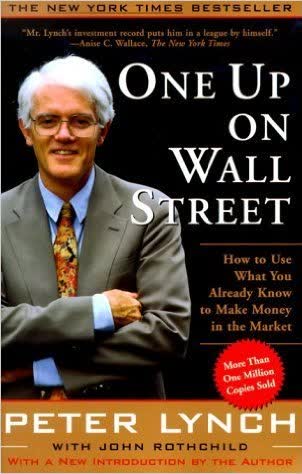
Source
Lynch puts companies in six categories:
What matters here is to understand that you should not invest in all companies the same way. Some require an extended time horizon, while others offer a trading window of merely a few weeks. Understanding the kind of companies you are looking at is the key.
“Only invest what you could afford to lose without that loss having any effect on your daily life in the foreseeable future.”
It should go without saying that the money you will need in the next few months is better not invested in equities. No one can predict the short-term returns of equities.
“Know what you own, and know why you own it”
Peter Lynch is well known for recommending retail investors to invest in what they know.
These are merely examples of how individual investors can have insights into the superiority of a company simply by being a consumer or exposed to the product via its own experience and circle of competence. Understanding what you own is critical to making sound investment decisions and staying the course. You wouldn’t buy a house just based on a listing without visiting the premises. The same applies to a stock.
“If you want to avoid a single stock, it would be the hottest stock in the hottest industry.”
Peter Lynch probably believes you should think carefully before buying Snowflake (SNOW) or Zoom Video (ZM) after their massive run.
“Do not try to predict the economy. A great many personalities have failed. Predicting the economy is futile.”
Focus on businesses and don’t waste time trying to forecast future market movements. Simple, yet so many people ignore this advice.
“The trick is not to learn to trust your gut feelings, but rather to discipline yourself to ignore them. Stand by your stocks as long as the fundamental story of the company hasn’t changed.”
Understanding that your feelings are your own worst enemy is easy. But to identify it when it happens is incredibly difficult. Most investors “feel” a stock is not going to do much from here. They end up selling at the worst possible time. A stock doesn’t care about your feelings. Or as Warren Buffett puts it: “A stock doesn’t know that you own it.”
“Selling your winners and holding your losers is like cutting the flowers and watering the weeds.”
Possibly the most important lesson of this book. So many investors sell a stock right when it’s up 20%, 50% or 100%. They feel great about securing their small gains. They reinvest their profit into stocks that are underperforming in the hope to break even faster. More often than not, they are making a terrible decision. I discuss this idea in more detail here.
Warren Buffett describes Philip Fisher as one of “the most influential investors of all time.” He also dubbed Fisher’s book Common Stocks and Uncommon Profits “invaluable.”
If Benjamin Graham has been a mentor to Buffett when it comes to quantitative analysis, Philip Fisher is the author who put the spotlight on the qualitative analysis of a stock.
Most readers will be familiar with the famous quote from Buffett saying that “it’s far better to buy a wonderful company at a fair price than a fair company at a wonderful price.” While Benjamin Graham was interested in “cigar butts,” companies that trade below their book value, Philip Fisher is focused on the greatest businesses and simply looking for an appropriate price.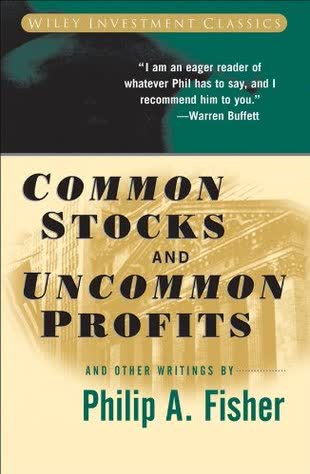
Source
What are the main lessons from this book?
The book centers around a checklist of 15 key aspects to look for before making an investment in an individual stock. These factors are qualitative as much as they are quantitative. I won’t examine all 15 points in this article, but they cover a wide range of topics such as:
Philip Fisher is preaching the idea of focusing on fast growing companies with a large untapped potential rather than focusing on bargains. He explains:
“The reason why the growth stocks do so much better is that they seem to show gains in value in the hundreds of per cent each decade. In contrast, it is an unusual bargain that is as much as 50 per cent undervalued. The cumulative effect of this simple arithmetic should be obvious.”
Another essential aspect he covers is the time horizon.
“If the job has been correctly done when a common stock is purchased, the time to sell it is — almost never.”
If you have researched a company properly before buying and have deemed the business worthy of an investment, there shouldn’t be any good reason to part ways with your shares anytime soon. Yet many investors panic at the sight of any negative news.
All these might be reasons to investigate and put in context the original bullish thesis. But your thesis should rarely be broken by a single piece of news or a single bad quarter. Businesses don’t grow in a straight line and they have rough patches even when executing properly. Fisher says that the right time to sell is when a mistake was made when buying, or when a company has likely reached its “peak earning position.” If a company has a growth path ahead, holding is the way to go.
“Investors have been so oversold on diversification that fear of having too many eggs in one basket has caused them to put far too little into companies that they thoroughly know and far too much into others about which they know nothing at all. It never seems to occur to them, much less their advisors, that buying a company without having sufficient knowledge of it may be even more dangerous than having inadequate diversification.”
This idea has certainly resonated with Charlie Munger and Warren Buffett, who concentrate the vast majority of their portfolio into their top holdings. There is a balance to find between diversification and concentration, a topic that I wrote about previously.
Overall, Philip Fisher has opened my eyes by laying out the most simple and obvious investing strategy:
Howard Marks is the chairman and cofounder of Oaktree Capital Management. His book The Most Important Thing is a compilation of the wisdom from his client memos, filled with key elements of a lifelong success at investing and pitfalls to avoid.
His book is powerful because he illustrates his points with real-life examples and moments from his career. The Money Game by Adam Smith uses the same anecdotal approach.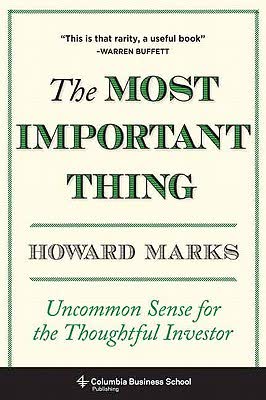
Source
Reading The Most Important Thing was the first time I was introduced to the concept of “second level thinking” that I recently touched on in an article. Howard Marks opened my eyes to the importance of a contrarian mindset.
To be fair, there isn’t much in this book that you won’t find already in other classics by Graham, Klarman, Taleb, Montier or Mauboussin. But the writing style of Howard Marks and his simple way of explaining powerful concepts can have a lasting effect.
There is a certain humility in Howard Mark’s writing. He has no magic formula or sure path to riches. He offers great insights on understanding market cycles and how to adjust risk vs. returns tradeoffs and recognize when to be a contrarian when the crowd appears at the extreme end of the psychology spectrum. Controlling risk and looking for a margin of safety are among the themes he covers.
“First-level thinkers look for simple formulas and easy answers. Second-level thinkers know that success in investing is the antithesis of simple.”
To use a simple example, when the stock of a great company falls following the release of negative news, the first level thinker will sell and move on. The second level thinker will buy, seizing the opportunity to accumulate shares at a lower price when the long-term thesis is intact.
“There’s only one way to describe most investors: trend followers. Superior investors are the exact opposite. Superior investing […] requires second-level thinking—a way of thinking that’s different from that of others, more complex and more insightful.”
Being a contrarian isn’t easy. It requires courage. It’s simple to understand in concept but terribly difficult to execute. There is something re-assuring in how Marks puts it.
“The choice isn’t really between value and growth, but between value today and value tomorrow. Growth investing represents a bet on company performance that may or may not materialize in the future, while value investing is based primarily on analysis of a company’s current wealth.”
This quote is so important because many investors are focusing on the value of a company today, while overlooking the possibilities of its value tomorrow. A fast-growing company might look overvalued based on backward-looking metrics. Investors end up seeing the way a company should be valued in a dogmatic way, regardless of where the business might be in its lifecycle. They will claim that Netflix (NFLX) or Tesla (TSLA) cannot have any value as a business because the cash flow is negative, without recognizing that the value comes down to future developments that remain to be seen.
Inspired by 100 to 1 in the Stock Market by Thomas Phelps, Chris Mayer studied the characteristics of 100-baggers – companies that have returned $100 for every $1 invested in them.
The goal of the books is to understand what can create these astounding returns and understand if we can find commonalities between them. Walking down memory lane, the book is filled with success stories that were for everyone to see, only if they knew where to look. 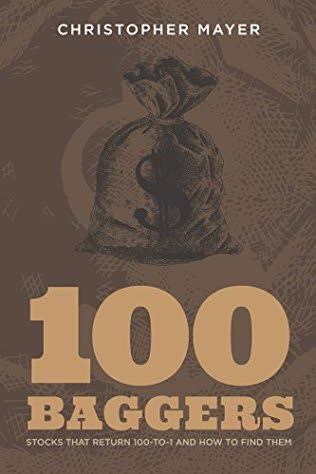
Source
You don’t need to find 100-baggers to have a fulfilling investing life. But the simple premise of trying to own 100-baggers is likely to change forever the way you invest. It will compel you to invest in superior businesses and will give you the fortitude to hold onto them through thick and thin.
100-baggers has opened my eyes to the necessary (but not sufficient) ingredient to owning an outstanding winner in your portfolio. And the answer is incredibly simple: Buy right and sit tight.
Thomas Phelps explains:
“To make money in stocks you must have the vision to see them, the courage to buy them and the patience to hold them. Patience is the rarest of the three.”
To see compounding returns work in your favor, time is the most essential ingredient. The idea is to invest in companies that have the potential to vastly outpace others and stick with them as long as the thesis is intact. Investors are looking for reasons to sell every quarter when they should be focused on the big picture over the long-term. The perspective of owning a 100-bagger can help gain this mindset. With this mental model, you can finally understand the importance of being a reluctant seller, even when a company reaches a lofty valuation. I discuss this in more detail in my article about The Art of Not Selling.
The idea that patience is the most essential investor quality is not new and preached by Warren Buffett himself:
“Inactivity bordering on sloth is the cornerstone of our investment approach.”
A company needs an extended period of high growth to become a 100-bagger. This is illustrated by the table below that shows the years needed to become a 100-bagger based on the compound annual growth rate.
The book offers many other key lessons that put things in perspective:
I cannot recommend this book enough.
Founders of The Motley Fool David and Tom Gardner rose to fame in the 1990’s with stock recommendations on AOL. They have been on a quest to make investing in individual stocks an affair accessible for any retail investor.
The Motley Fool Investment Guide was originally published in 1996 and has been revised and updated multiple times. It remains a fantastic book to understand the many factors that can help research and select an investment opportunity in public equities.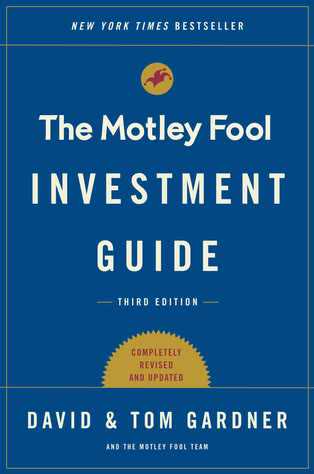
Source
The reason why this book is so essential to me is that it encapsulates many of the wise lessons spread by David Gardner over the years. His interview by Patrick O’Shaughnessy in 2017 is another way to get accustomed to what he calls rule-breaker investing.
David explains in detail in the book the concept of a rule breaker – a company that breaks the rules of how business is being done.
There are six attributes of rule breakers:
These criteria have truly shaped my mindset when approaching a new investment opportunity. Not all companies will satisfy all attributes perfectly. But when they do, it will usually lead to finding absolutely outstanding performers. Companies like The Trade Desk (TTD) or Shopify (SHOP) have become 10-baggers for me in the past few years, and I attribute my investment in them to how David Gardner shaped my approach, being on the lookout for rule breakers all around me.
Here are some fantastic lessons that David Gardner has conveyed over the years:
It was difficult for me to select only five books that have truly shaped my investing approach. There are many more that have slowly shifted my mental models and the way I invest. But I believe these five books really left a mark and changed my life as an investor for the better.
Books from authors focused on behavioral investing (Montier, O’Shaughnessy, Greenblatt, Crosby), decision making and probability (Taleb, Duke, Portnoy) or business in general (Thiel, Moazed) would all have been worthy additions to this list.
Let me know in the comments!
If you are looking for a portfolio of actionable ideas like this one, please consider joining the App Economy Portoflio. Start your free trial today!
The rise of the App Economy is disrupting many industries: retail, entertainment, financials, media, social platforms, healthcare, enterprise software and more.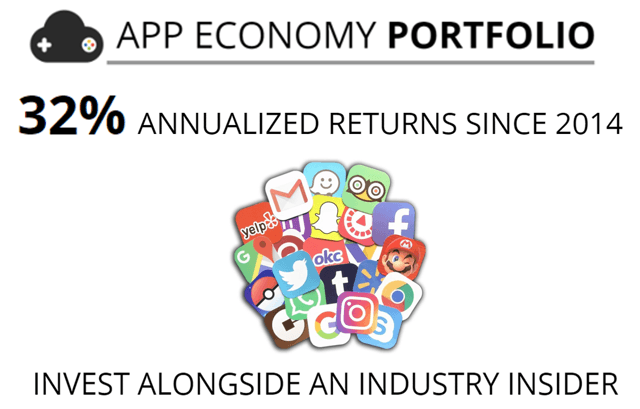
This article was written by
Discipline and consistency win the game over time. Unfortunately, many investors violate their own model or strategy when their portfolio performance is temporarily disappointing. I would rather sell too late than too early, so I tend to never sell. I let my winners compound to a significant portion of my portfolio and let my losers become insignificant over time.
Disclaimer:
All App Economy Insights contributions to Seeking Alpha, or elsewhere on the web, are personal opinions only and do not constitute investment advice. All articles, blog posts, comments, emails, and chatroom contributions by App Economy Insights – even those including the word “recommendation” – should never be construed as official business recommendations or advice. In an effort to maintain full transparency, related positions will be disclosed at the end of each article to the maximum extent practicable. The premium service App Economy Portfolio is a research and opinion subscription. I am not registered as an investment adviser. The majority of trades are reported live, but this cannot be guaranteed due to technical constraints. Investors should always do their own due diligence and fact-check all research prior to making any investment decisions. Liability of all investment decisions reside with the individual investor.
Disclosure: I am/we are long AAPL AMZN CRM MTCH NFLX SHOP TTD TWLO V Z. I wrote this article myself, and it expresses my own opinions. I am not receiving compensation for it (other than from Seeking Alpha). I have no business relationship with any company whose stock is mentioned in this article.